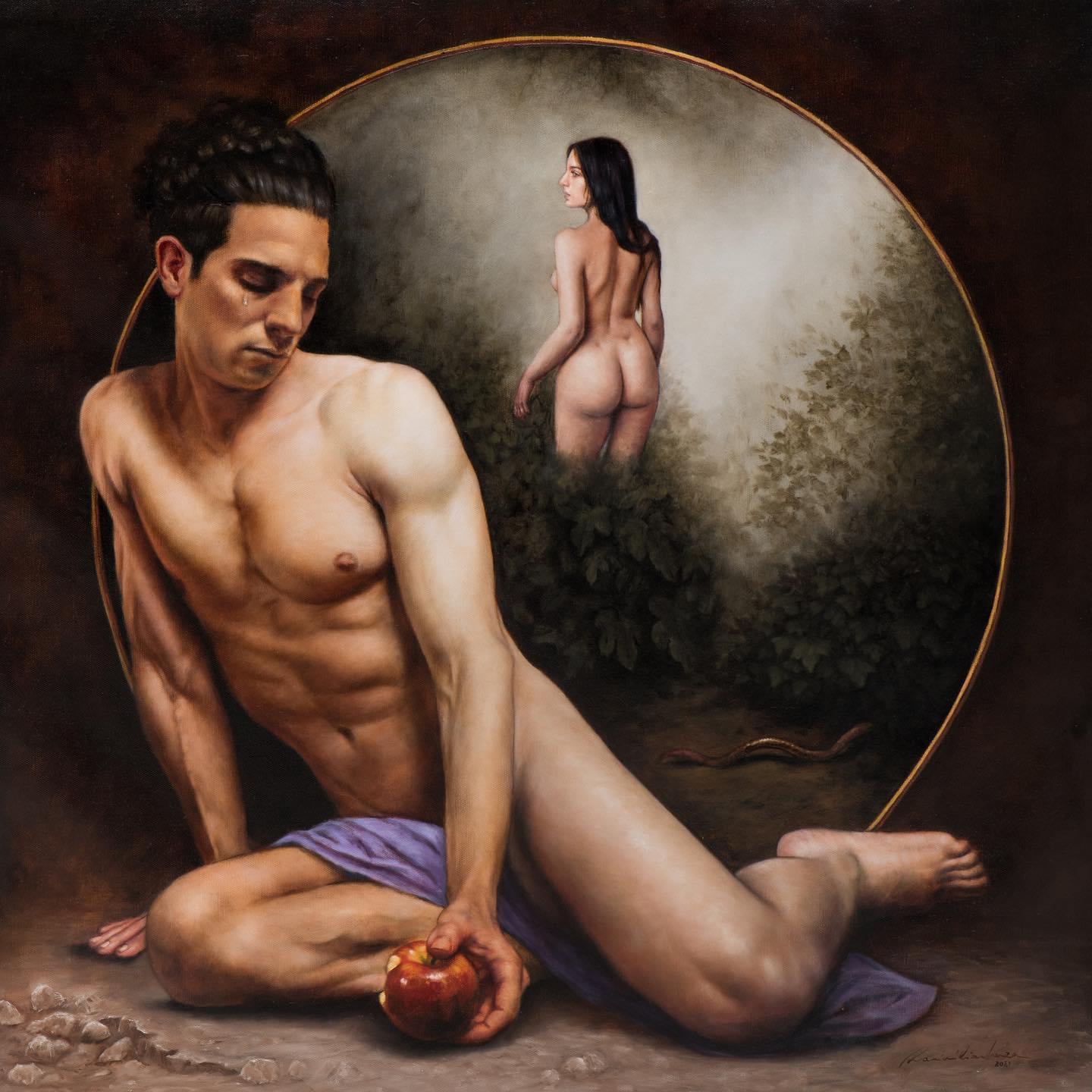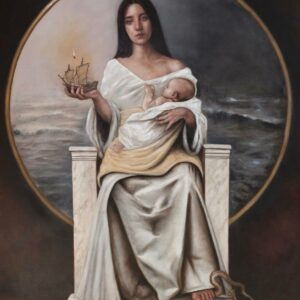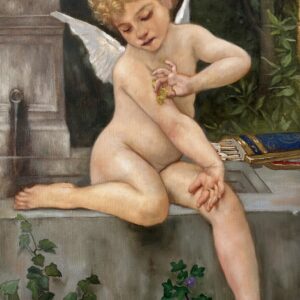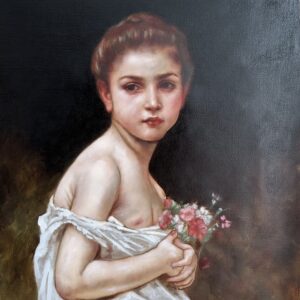Descrizione
The work explores the complexity of sin as an inherently human element, reflecting not only the transgression committed by Adam and Eve but also the universal nature of guilt and repentance. The depiction of Adam and Eve, with their gestures and the dramatic setting, underscores how sin is not merely a historical event but an existential condition that afflicts humanity in a perpetual manner.
The painting invites the observer to reflect on human fragility in the face of temptation. The choice to show Adam in a state of vulnerability and regret, with a veil of shame and a bitten apple, symbolizes human weakness and the inevitable temptation each individual faces. This representation highlights the inner struggle between desire and morality, and how awareness of one’s own imperfection is a fundamental part of the human experience.
The scene does not merely narrate a story but stimulates reflection on redemption and the possibility of transcending guilt. The voice of God, asking Adam why he hides, represents a call to awareness and redemption, suggesting that true understanding and forgiveness may arise from confronting one’s weaknesses and recognizing one’s condition.
In this way, “The Original Sin” becomes a work that not only documents a biblical moment but also invites a deeper reflection on the human condition, its frailties, and the ongoing quest for redemption and personal understanding.






Recensioni
Ancora non ci sono recensioni.